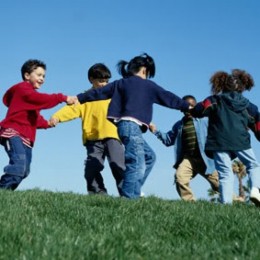Playground Safety Considerations
May 31, 2012 - 3 minutes read If your church has a playground for children, it’s important that it complies with Australian safety standards. While bruises, cuts and scrapes are a normal part of childhood, many injuries go way beyond this level.
If your church has a playground for children, it’s important that it complies with Australian safety standards. While bruises, cuts and scrapes are a normal part of childhood, many injuries go way beyond this level.
According to the Australian Institute of Health and Welfare (AIHW), the leading cause of death and disability among children in Australia is injury and poisoning, and for every death there are many more children who are admitted to hospital. This highlights the importance of safety as the number one priority at all times in child facilities and playgrounds.
A large proportion of injuries in playgrounds results from falls, causing injuries to the head and other parts of the body such as a shoulder, wrist or arm. Other playground risks include entrapment in small openings, trip hazards, sharp edges on play equipment, poisonous plants, and unsupervised play.
While we want our kids to enjoy taking some risks, to gain new skills and confidence, and to learn their limits through a bit of trial and error, it’s also important that they are kept safe from severe injury and death. Considerations for child safety in the design of playgrounds include the following:
- The surface beneath play equipment – Australian standards stipulate that for equipment with a “free height of fall” of greater than 500mm the surface beneath the equipment must be able to reduce the impact of falls. Acceptable surfaces include those made from synthetic rubber or loose-fill such as mulch, sand or pine-bark chips. Loose surfaces need to be 300mm deep and should be regularly checked and topped up if necessary.
- No sharp edges on play equipment – including screws, nails or other protrusions or hazards that might cause cuts or entanglements.
- Guardrails should be installed on all elevated surfaces above 500mm.
- No points of entrapment or pinching where a child could trap his or her head, chest, limbs or fingers.
- No moving parts that might cause pinching or crush injuries.
- Shade options such as trees or shade sails to help prevent sunburn and/or burns from hot play equipment.
- Trip hazards such as rocks, logs and stumps should be removed.
- Supervision of children at all times is vitally important.
- Safe access points are important to reduce the risk of accidents with vehicles or other hazards.
Other considerations include ensuring the provision of age-appropriate activities, anchoring of all equipment to the ground, suffocation hazards, spacing of equipment, and anticipated numbers of children.
Make your playground a place where children can explore and enjoy new challenges, whilst remaining safe from serious injury in the process.
Read further posts on child safety for church organisations here.
Written by Tess Oliver
Tags: children
Recent Comments